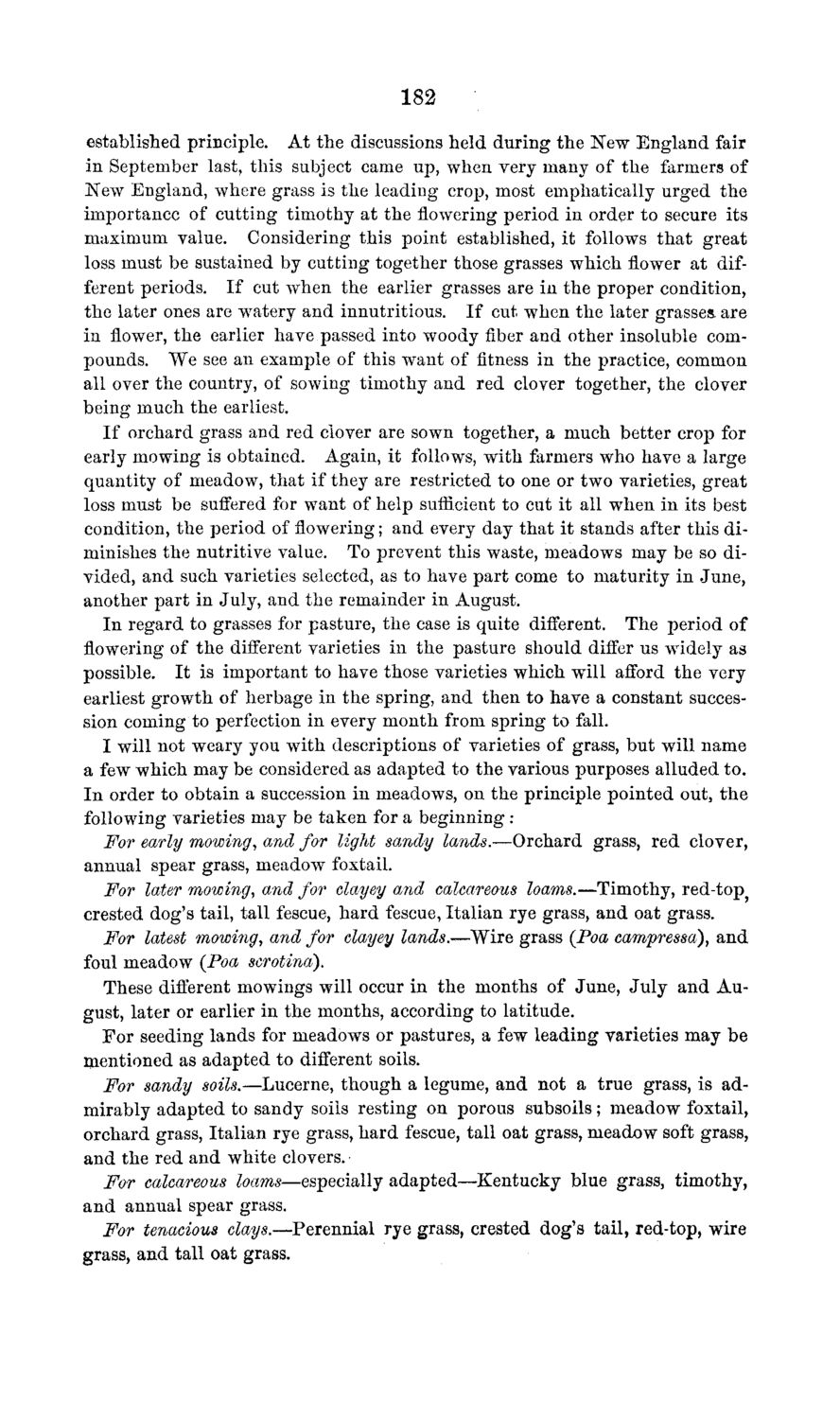| |
| |
Caption: Board of Trustees Minutes - 1869
This is a reduced-resolution page image for fast online browsing.

EXTRACTED TEXT FROM PAGE:
182 established principle. At the discussions held during the New England fair in September last, this subject came up, when very many of the farmers of New England, where grass is the leading crop, most emphatically urged the importance of cutting timothy at the flowering period in order to secure its maximum yalue. Considering this point established, it follows t h a t great loss must be sustained by cutting together those grasses which flower at different periods. If cut when the earlier grasses are in the proper condition, the later ones are watery and innutritious. If cut when the later grasses, are in flower, the earlier have passed into woody fiber and other insoluble compounds. We see an example of this want of fitness in the practice, common all over the country, of sowing timothy and red clover together, the clover being much the earliest. If orchard grass and red clover are sown together, a much better crop for early mowing is obtained. Again, it follows, with farmers who have a large quantity of meadow, that if they are restricted to one or two varieties, great loss must be suffered for want of help sufficient to cut it all when in its best condition, the period of flowering; and every day that it stands after this diminishes the nutritive value. To prevent this waste, meadows may be so divided, and such varieties selected, as to have part come to maturity in June, another part in July, and the remainder in August. In regard to grasses for pasture, the case is quite different. The period of flowering of the different varieties in the pasture should differ us widely as possible. It is important to have those varieties which will afford the very earliest growth of herbage in the spring, and then to have a constant succession coming to perfection in every month from spring to fall. I will not weary you with descriptions of varieties of grass, but will name a few which may be considered as adapted to the various purposes alluded to. I n order to obtain a succession in meadows, on the principle pointed out, t h e following varieties may be taken for a beginning : For early mowing, and for light sandy lands.—Orchard grass, red clover, annual spear grass, meadow foxtail. For later mowing, and for clayey and calcareous loams.—Timothy, red-top crested dog's tail, tall fescue, hard fescue, Italian rye grass, and oat grass. For latest mowing, and for clayey lands.—Wire grass (Poa campressd), and foul meadow (Poa scrotina). These different mowings will occur in the months of June, J u l y and August, later or earlier in the months, according to latitude. For seeding lands for meadows or pastures, a few leading varieties may be mentioned as adapted to different soils. For sandy soils.—Lucerne, though a legume, and not a true grass, is admirably adapted to sandy soils resting on porous subsoils; meadow foxtail, orchard grass, Italian rye grass, hard fescue, tall oat grass, meadow soft grass, and the red and white clovers. For calcareous loams—especially adapted—Kentucky blue grass, timothy, a n d annual spear grass. For tenacious clays.—Perennial rye grass, crested dog's tail, red-top, wire grass, and tall oat grass.
| |